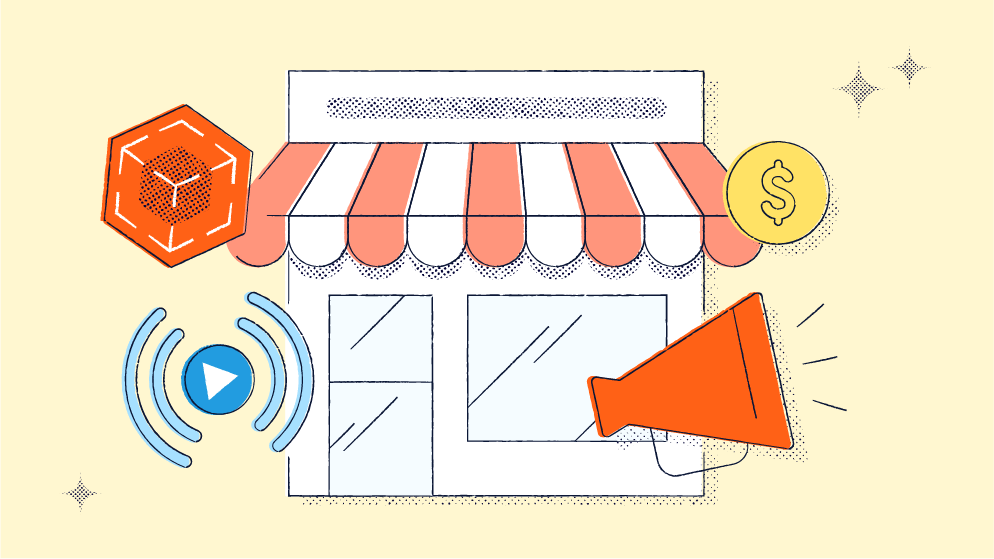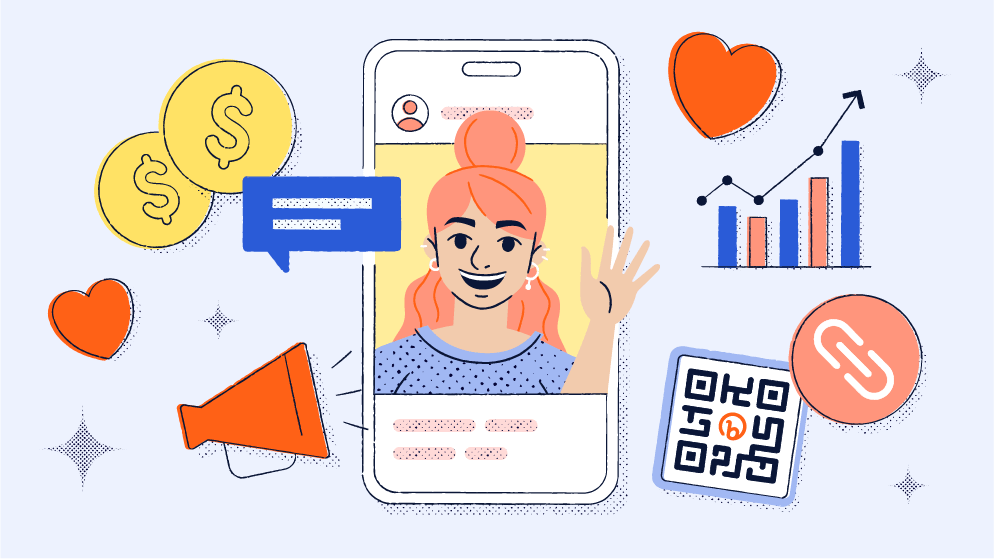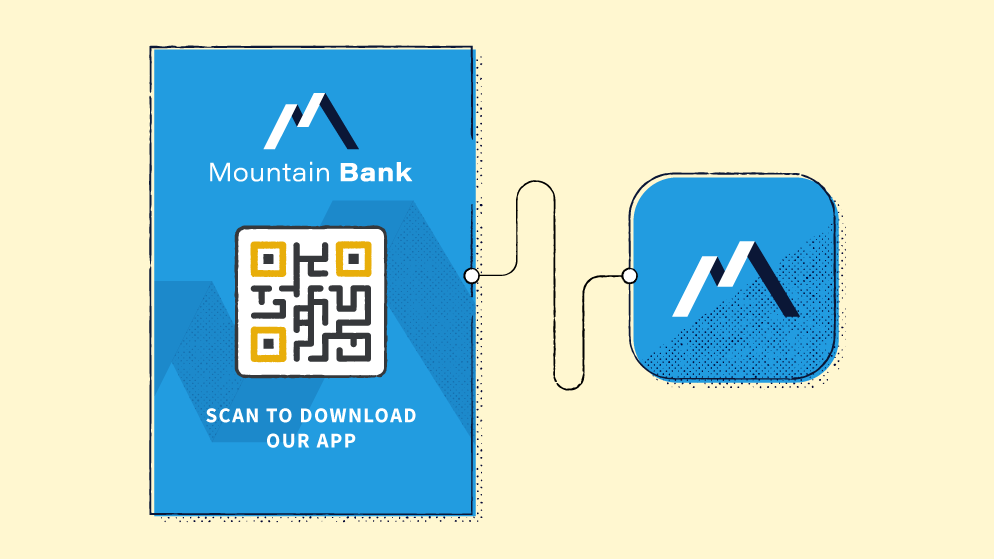From banks and credit unions to brokerages and investment firms, financial institutions have been staples of their communities for decades. But that doesn’t mean bank marketing is a breeze.
Today, consumers in the U.S. have a wide range of options to pick from, with over 4,000 small banks nationally. Add to that the newest competition brought on by the fintech industry—with more than half of consumers relying on fintech apps to navigate economic challenges—and the stakes for attracting and keeping banking customers have never been higher.
With such a wide range of options, consumers can afford to be selective, and they’re choosing efficiency, innovation, and flexibility. Banks’ traditional strengths—as personal touchpoints, helpful resources, and trusted local experts—still matter, but they need to approach marketing and customer engagement with new tactics focused on connection and convenience.
Transform your marketing by promoting your world-class service and personalized support through tactics designed with your customer’s needs at the center—starting with QR Codes and short links.
What is bank marketing?
Bank marketing is the strategic approach to marketing taken on by financial institutions to promote their services and engage with current and prospective clients. It encompasses a wide range of activities aimed at enhancing brand visibility, attracting new customers, and cultivating enduring relationships.
Oftentimes, these efforts span traditional and digital marketing channels, including targeted advertising, personalized communications, and innovative customer experiences. By leveraging technology and data-driven insights, banks can effectively reach their desired audience, driving growth and competitiveness in the swiftly evolving financial landscape.

Using technology to make connections
Consumer expectations of convenience and customer service don’t just apply to the banking experience itself—although offerings like online banking and mobile apps are now highly important to consumers. (In fact, 91% of Americans say those features are very or somewhat important when choosing where to open an account.) Banks need to embrace seamless digital marketing methods, too.
As financial institutions navigate the challenges of engaging, retaining, and connecting with clients, the channels they employ to interact with both current and prospective customers have become increasingly vital. Utilizing tools such as QR Codes and short links enables banks to provide audiences with quick and accessible touchpoints for real-time learning, facilitating more convenient and connected marketing efforts.
Whether a potential client encounters your brand on social media or through a traditional channel like direct mail, these tools empower them to take instant action on their own terms. Plus, with every scan or click, your brand gains real-time insights about who’s interested in your offerings—where they’re located, which calls to action are most compelling, and which channels are working.
Let’s explore how you can use these tactics to grow your engagement and audience through customer-focused and data-driven digital marketing.
Questions to ask when choosing channels
Bank marketing isn’t one-size-fits-all—it depends on your institution, your ideal or typical clients, and your overall marketing strategy. Ask yourself and your team these four questions before choosing or reevaluating marketing channels.
1. Who’s our audience?
Think about the kinds of clients your bank wants to reach: their age, background, and financial goals. Get as specific as you can, and create personas for each group that help you understand what your audience’s priorities might be.
2. What sets us apart from other institutions?
Do you have the local connections of a community credit union or the resources and recognition of a major bank? Each of those brands has its benefits, but you need to know your strengths so that you can lean on them through your marketing.
3. Where can we reach our ideal clients?
Brainstorm and research where your audience spends their time and how they might encounter your bank—and want to learn more. You’ll need to balance your budget across a range of channels and give them clear action steps if they want to learn more, from opening an account to applying for a loan.
4. How are we measuring success?
Measurement is the key to effective bank marketing. When you have data on where your traffic and engagement come from, you can make improvements by switching out a tactic, channel, or messaging to better connect with your audience—and to improve marketing ROI.
Use tools that offer analytics for real-time insights and data-driven improvements. With QR Codes and short links, for instance, you can see every scan and click as it happens, including referring channels and where the customer is located. That’s one of many reasons why they’re a great addition to any of your marketing campaigns.
10 tactics for better bank marketing
Enhance your existing marketing channels by adding convenient touchpoints like QR Codes and short links, and experiment with all-new ways of engaging your current and potential customers. Try these 10 bank marketing strategies to find the best ones for your audience.
1. Elevate live events
Live events are the perfect way for local banks to get face time with potential customers and present their offerings to the right audience. Spend time at trade shows, partner with community organizations, and share your expertise at schools, colleges, and community centers. In these settings, you can offer financial best practices while expanding your brand’s community presence—even without directly promoting your products.
Provide a QR Code at an event booth or on presentation slides, or offer a memorable short link that lets your audience download slides, take home a written version of your content, or connect with your team when they’re ready. Use these tools to customize your call to action and capture where your audience came from.
2. Give clients confidence through content
Finances can be a tough topic—so build trust and confidence with potential clients by creating helpful written, visual, or video content that educates them. Then, share a short link to this information across your other channels, like email, social, or digital ads.
While there’s a time and place to sell your products and services directly, focus on sharing helpful, valuable content based on the knowledge of your staff or local partners. Figure out and answer the kinds of questions and concerns your customers have at key milestones, like during the home buying process or when investing for the first time, even outside their finances. They’ll see you as a trusted community resource, and your name will be the first one that comes to mind when they’re ready to move forward.
3. Show your personality on social
Don’t just promote your products on social media—lead with your bank’s personality. Tie your content, first and foremost, to your people and your brand, and play to your strengths by offering resources to your customers. Create customer success stories that make your clients the heroes (not your bank) so that others can see themselves in those stories and want to achieve the same kind of growth.
Share short links to your content on other channels, but you should also create zero-click content and offer native value in the post before they even visit your website or blog. It may seem counter-intuitive, but when you lead with value in your posts, you build authority with your followers so that they’re eager to gain even more insights by clicking to learn more.

4. Create connected customer collateral
Make customer experiences as seamless as possible by taking documents into a digital format. Each time your clients visit your branch location, offer pamphlets about new offerings or printouts for their future reference in a digital format by sharing a QR Code to scan and save documents for later. If you send a printed statement or offer, provide a QR Code they can scan to review the information online and reach out with questions.
Not only does this offer a more convenient experience for customers—who don’t have to file away a huge stack of paper—but it also saves your branch printing costs and drives sustainability.
5. Become a money management guide
Embrace your strengths as a financial institution by offering customers guided assistance with regular or customized check-ins. Let customers opt into SMS marketing for statement reminders, application updates, or savings check-ins—text them secure, trustworthy short links to check on their account or progress toward a financial goal.
The convenience of these outreaches keeps them motivated and focused on what they’re trying to achieve and can increase spending. Plus, these offerings show that you care about their financial health, which research shows increases satisfaction, loyalty, and retention.
See for yourself! Learn how Koozie Group sends hundreds of thousands of secure order updates each month by texting Bitly short links to their customers.
6. Fuel better experiences with customer feedback
Once someone becomes a client, your priority is to compel them to stay with you—and one way to do that is by asking them what you could do better. Check in via email or text with a short link to a feedback survey after a branch visit, when they purchase a new service, or at other key customer milestones.
Ask them about their experience and what you could do better. You can also use these surveys to identify happy customers who have achieved their financial goals—follow up with some of these clients to create engaging success stories.

7. Personalize the paths on your website
Your current and potential customers have distinct needs when they visit you digitally—so make your website journey as clear and seamless as possible.
Show your current customers they’re in the right place by sharing a short link that takes them straight to their account log-in. Meanwhile, give prospects a dedicated short link to a landing page that’s focused on the services they’re interested in, so they know right away what you offer and what sets you apart. This strategy also lets your team review analytics on how many people visit particular pages, rather than just the number of visitors to your homepage.
8. Lean on your local presence in traditional bank marketing
Over the last decade, digital marketing spend has been growing significantly faster than traditional marketing investments. Even so, traditional channels still play an important role in marketing budgets for credit unions, brokerages, and local banks—with the right strategy and call to action.
From a billboard with a snappy short link to a TV ad featuring a QR Code to learn more, your presence on local channels can establish you as a community presence and resource. Think critically about your audience, including their location, demographics, and needs. If you offer a niche service that’s best suited to Baby Boomers or young families, traditional bank marketing can be a great way to reach them.
And tools like QR Codes and short links let you measure the success of those channels in a way that you couldn’t before. Now, you can make data-driven decisions about how to spend your budget, which services are most compelling to a certain group, or what messaging is most effective.
9. Focus on mobile-friendly experiences
Seamless self-service options are no longer a value-add—customers assume they’ll have convenient online access to their account or a user-friendly mobile app. While you shouldn’t necessarily promote these as an above-and-beyond offering that sets your institution apart, you can still make these elements easy to access.
For first-time customers, share a QR Code to download the app for the first time or a short link to your customer portal for easy online banking access. Make sure your website is mobile-responsive so guests have positive experiences, no matter what device they’re on. (Hint: Your customers are visiting from their phones—more than half of all traffic is now mobile.)

10. Speak their language with segmentation
Across all of your marketing channels, personalize and segment your audience’s experience to reach them with the right message at the right time. Promote your offerings to specific demographics that are the perfect fit for a certain service.
Partner with a university to promote first-time accounts or credit cards to college students, with a specialized short link to redeem a particular offer, for instance. Feature a QR Code on flyers or physical ads with a link to a nearby upcoming event. Then, use analytics to review how each tactic is performing and where scans and clicks are coming from, so you can change messaging or adjust tactics as needed.
Build trust your customers can bank on
For financial institutions, taking someone from awareness of your brand to a lifetime customer rarely (if ever) happens overnight. Many clients’ journeys to open an account or take out a loan involve lots of touchpoints before they’re ready to make the next step. That’s why you need to offer easy, convenient ways to take action on every channel—so when they are ready to move forward, they can.
Whether you’re trying to reach a first-time account holder, hopeful homebuyer, or soon-to-be retiree, QR Codes and short links let you make the most of your marketing and see the impact of your efforts in real time. Your service and personal support are what set you apart—and when combined with convenience and innovative marketing strategies—you can build confidence and trust at every turn.




